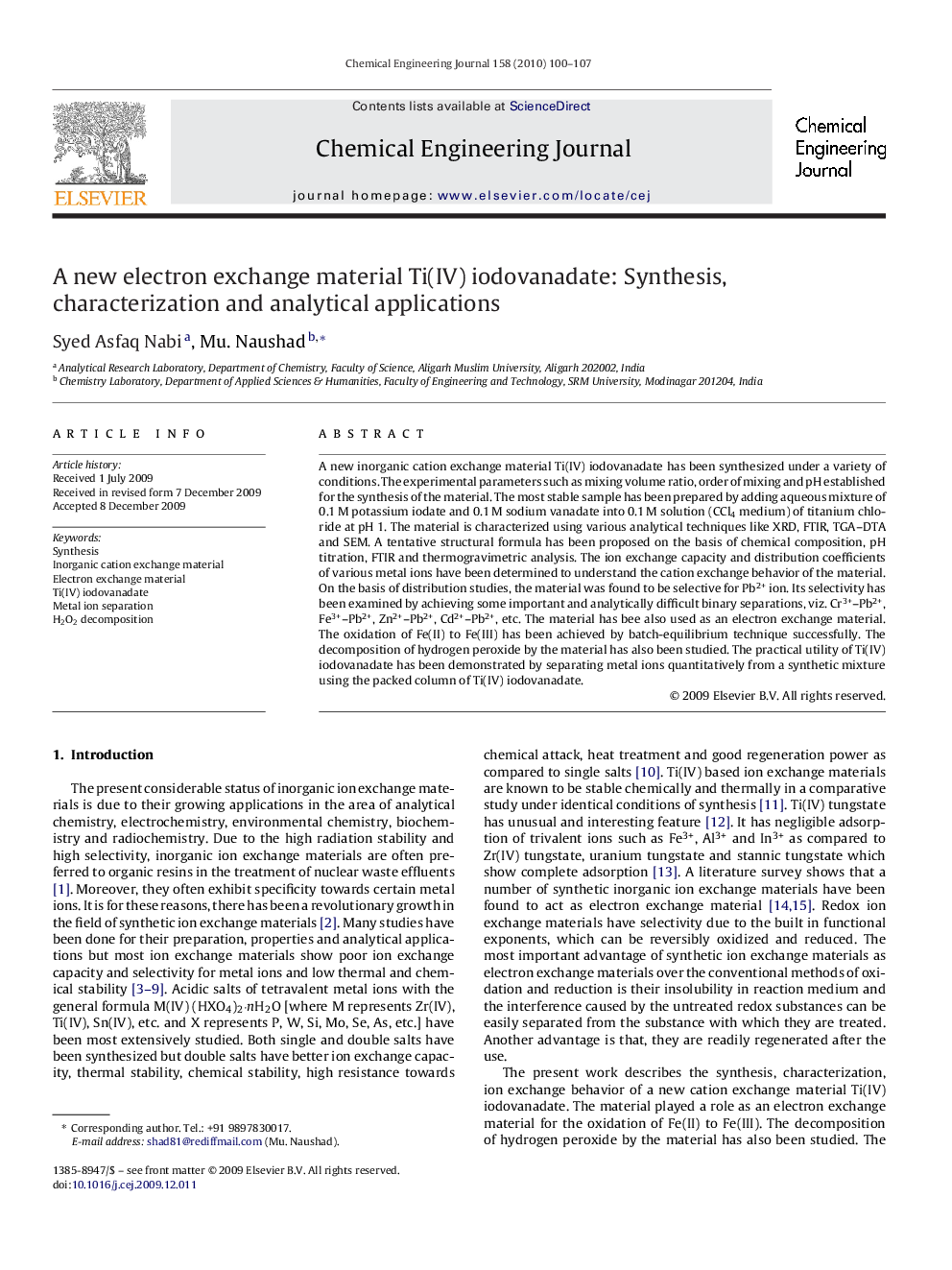| Article ID | Journal | Published Year | Pages | File Type |
|---|---|---|---|---|
| 152078 | Chemical Engineering Journal | 2010 | 8 Pages |
A new inorganic cation exchange material Ti(IV) iodovanadate has been synthesized under a variety of conditions. The experimental parameters such as mixing volume ratio, order of mixing and pH established for the synthesis of the material. The most stable sample has been prepared by adding aqueous mixture of 0.1 M potassium iodate and 0.1 M sodium vanadate into 0.1 M solution (CCl4 medium) of titanium chloride at pH 1. The material is characterized using various analytical techniques like XRD, FTIR, TGA–DTA and SEM. A tentative structural formula has been proposed on the basis of chemical composition, pH titration, FTIR and thermogravimetric analysis. The ion exchange capacity and distribution coefficients of various metal ions have been determined to understand the cation exchange behavior of the material. On the basis of distribution studies, the material was found to be selective for Pb2+ ion. Its selectivity has been examined by achieving some important and analytically difficult binary separations, viz. Cr3+–Pb2+, Fe3+–Pb2+, Zn2+–Pb2+, Cd2+–Pb2+, etc. The material has bee also used as an electron exchange material. The oxidation of Fe(II) to Fe(III) has been achieved by batch-equilibrium technique successfully. The decomposition of hydrogen peroxide by the material has also been studied. The practical utility of Ti(IV) iodovanadate has been demonstrated by separating metal ions quantitatively from a synthetic mixture using the packed column of Ti(IV) iodovanadate.
